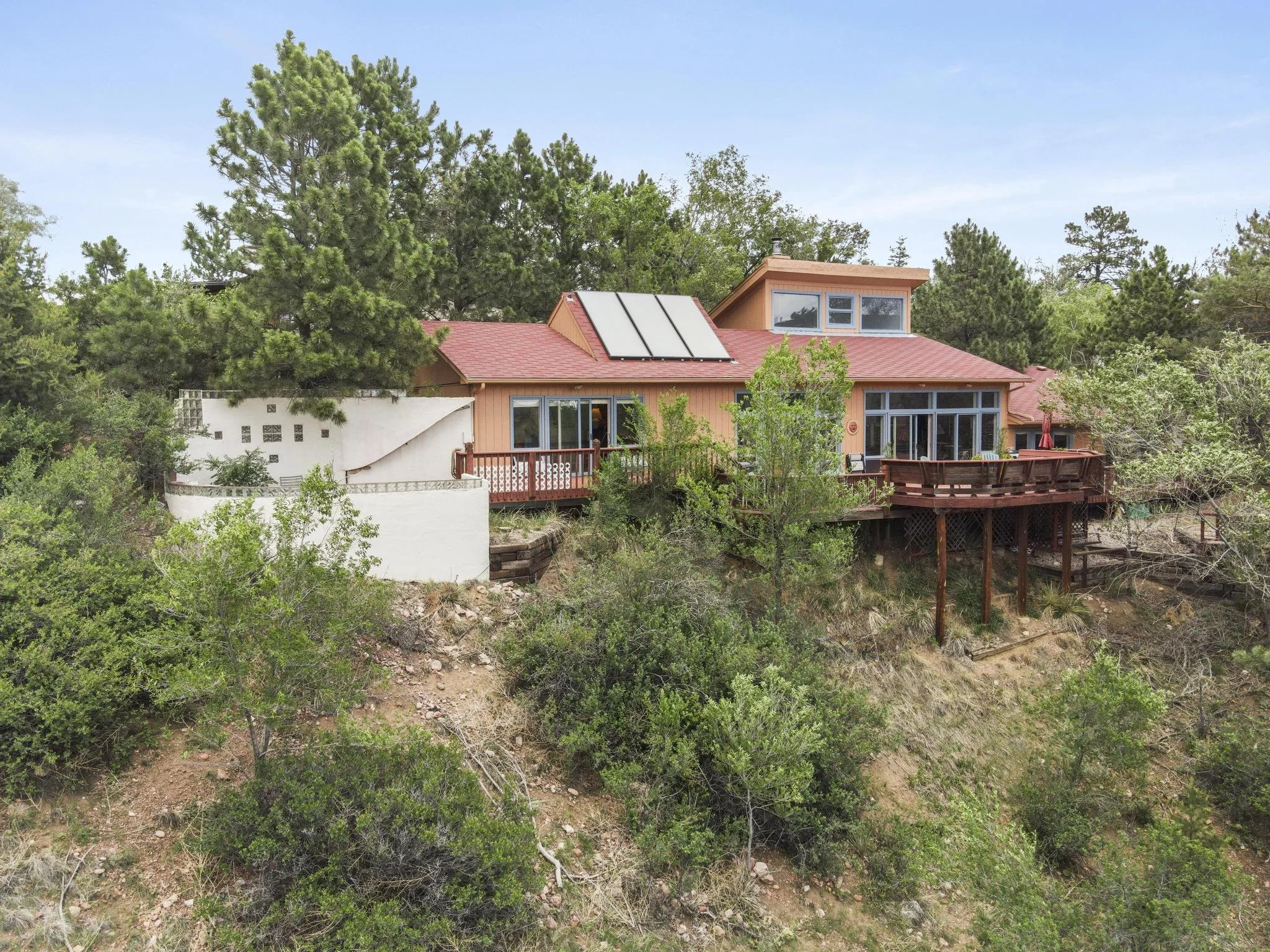One lightning strike, one unattended campfire, or one drought season.
That's how far away Colorado is from the next megafire, warned Dan Gibbs, executive director of the Department of Natural Resources.
Gibbs, a certified wildland firefighter, was on the front lines of the Cameron Peak fire two years ago.
"The 2020 fire season taught us that the status quo of our forest health and wildfire mitigation programs are no longer cutting it," he said.
Gibbs, along with other state and local officials, joined Gov. Jared Polis on Monday, visiting one of the 49 state-funded projects intended to address wildfire mitigation, touring a private property in Jefferson County, which faces the highest wildfire risk in the state.
"We need to up our game on fire preparedness," Polis said, surrounded by state and county officials and with a crew of seven from the Mile High Youth Corps, the boots-on-the-ground young people who are gaining job skills, as well as protecting homes and people from wildfire danger.
The work crew is funded by the Colorado Strategic Wildfire Action Program (COSWAP), which is in its second year, the result of 2021 legislation. Jefferson County received $1 million from the program for its "Wildfire Safe" initiative, intended to reduce the fuel that feeds wildfires.
Fire mitigation efforts are more important than ever, Polis said, pointing to the 2020 trio of record-setting fires and the Marshall fire that tore through a thousand homes last year. Over the past two years, Colorado has committed around $145 million in state funds and leveraged millions in federal funds for forest health and wildfire mitigation work to protect communities, critical infrastructure and watersheds from future wildfires.
That includes $13.3 million for on-the-ground forest mitigation work and landscape scale projects this year and $44 million to protect and restore watersheds threatened by catastrophic wildfire.
The Colorado State Forest Service also saw significant boosts to its grant programs to communities for fuels mitigation work, new funds for a state nursery to support post-fire reforestation, and investments to enhance state wildfire risk awareness campaigns.
"We've seen these (mitigation) efforts work," Polis added. "We've seen where the flames stopped, short of homes and businesses, because of effective treatments."
The natural resources department identified priority areas for COSWAP funding, including in Jefferson County near Denver, and pledged $2.8 million for eight county projects.
"We are moving out with a purpose" and a sense of urgency, State Forester Matt McCombs said.
He applauded the efforts of state officials to understand the urgency of forest health and wildfire crisis in Colorado and respond with just-in-time funding and support. Recent fires have demonstrated the need for bold action, he said.
Thanks to the investments from the legislature and the Polis administration, the state forest service is removing more wildfire fuels from communities and watersheds, he said.
The home picked for Monday's visit is in-between two of Denver's mountain parks near Evergreen, which McCombs called "the epicenter of fire risk" in Colorado. About 60 acres were initially cleared of overgrowth trees about 10 years ago, so the youth crew is now doing maintenance – clearing the trees that have sprung up since then. Polis called the Evergreen property a model for mitigation efforts.
The homeowner, who did not want to be identified, explained that wildfires are a way of life in her part of Jefferson County. That included a fire 2 miles away on nearby Elephant Butte that resulted in evacuations.
"The fire was far enough way that we weren't worried at first, but then the wind changed direction," she said.
Another fire in 1998, about 5 miles away, also was affected by wind; it changed direction at one point, racing up her canyon until the wind shifted direction.
The thick forests and steep valley walls of Evergreen are what wildfire experts call fuel and topography. The final piece of the Wildland Fire Behavior “triangle” is weather, and with hotter summers, long-term drought and sometimes fierce winds, Evergreen is one of the highest-risk areas of the state for wildfires.
And while the wildfire risk alone is harrowing, what keeps some residents up at night is the fact that Evergreen faces arguably the most challenging evacuation conditions in Colorado.
A Gazette analysis of U.S. Census Bureau population data and geospatial roadway data, along with multiple simulated evacuations modeled using emergency management software, shows Evergreen faces a high risk of congestion or gridlock during an evacuation, in addition to the high wildfire risks.
Mitigation is important not only because it protects her home — but because she also has neighbors who won't do that same kind of mitigation, the Evergreen homeowner said.
Related Links
If there is a home that you would like more information about, if you are considering selling a property, or if you have questions about the housing market in your neighborhood, please reach out. We’re here to help.















